#bc a true Floridian knows that winter is the prime time to go to the beach
Text

It’s finally beach weather in Fl!!
#bc a true Floridian knows that winter is the prime time to go to the beach#think abt it no annoying noisy tourists no algae blooms no gross rain ruining evening plans#anyways take these two dorks enjoying some beach time fun!#idk just roll w it#doodle I liked enough to color but not enough to clean#my art#mbti#enfp#enfp x intj#intj#mbti art#mbti enfp#mbti intj#mbti personality types
77 notes
·
View notes
Text
Inquiry Based Essay
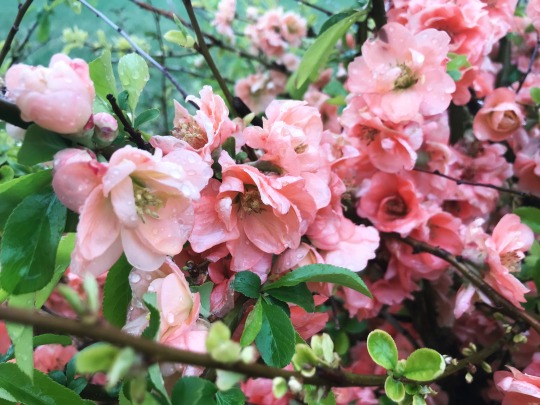
Watching my mom collect the heads of flowers that my dad gave her was the most romantic thing in the world to eight-year-old me. Growing sunflowers and catching frogs with my brother in our humid Floridian garden still makes me smile. Pressing flowers found on walks with my dad in stacks and stacks of books that may be lost, are far from forgotten. Dissecting the different Victorian meanings of flowers with my Grandmother over chips and guac are some of our closest moments. This is my bouquet of memories I hold closest to my heart. What might flowers bring to others?
Introduction:
The world is simultaneously an increasingly dark and immensely beautiful place. One can become overwhelmed with the darkness and forget to focus on the good. Listen to the news, or just take a look around to witness the pain and suffering that occurs in a place that is home to over seven plus billion people. While it is important to know what’s going on, it is just as essential to learn to see the beauty in the world, for that is a way one can find happiness. To frame that thought differently, think of the intro to the classic holiday movie, Love Actually (2004):
Whenever I get gloomy with the state of the world, I think about the arrivals gate at Heathrow Airport. General opinion’s starting to make out that we live in a world of hatred and greed, but I don’t see that. It seems to me that love is everywhere. Often, it is not particularly dignified or newsworthy, but it’s always there – fathers and sons, mothers and daughters, husbands and wives, boyfriends, girlfriend, old friends. When the planes hit the Twin Towers, as far as I know, none of the phone calls from the people on board were messages of hate or revenge – they were all messages of love. If you look for it, I’ve got a sneaky feeling you’ll find that love is actually is all around.
When you get right down to it, love and joy are what matter in the end. If each person doesn’t take the time to find something that brings them joy in each day, what is the point of living. One shouldn’t need to be nearing death to realize what makes them happy. If each person were to discover what this might be for themselves, the world would be more enlightened. To take that a step further, sharing the things that lighten people’s burdens might bring mutual respect and cross-cultural understanding on simple levels. The little aspects that bring beauty to the world can and should be acknowledged. Barbra Cooney promotes the idea that individuals must do their part to make the world more beautiful in her children’s novel, Miss Rumphius. The main character in this novel makes the world more beautiful by planting lupines all around her town. This is profound, the idea leaving the hearts of many feeling warm and hopeful.
Forgotten in my life until a couple of months ago, Miss Rumphius was a nightly read growing up. When my dad came to visit me in my new college home, I was telling him about this research project and how excited I was about it. As I was going into the different flowers I thought I would research he just sat and listened quietly. When I was done rambling, he just said, “but what are you going to do to make the world more beautiful?” All of a sudden, hundreds of nights where he, and my mom would read this book to me night after night came rushing back. Later that day, we went to a library to check out Barbra Cooney’s masterpiece. As he read it to me, I couldn’t help but shed a few tears.
Flowers do have this impact. It is through the simple yet compelling words of Miss Rumphius, ‘the lupine lady’, that my obsession with flowers began so many years ago. The combination of simplicity, beauty and usefulness are left out of day to day life of most, but have remained a significant part of mine. If I am to leave my mark and make this world even an ounce more beautiful than when I entered it,
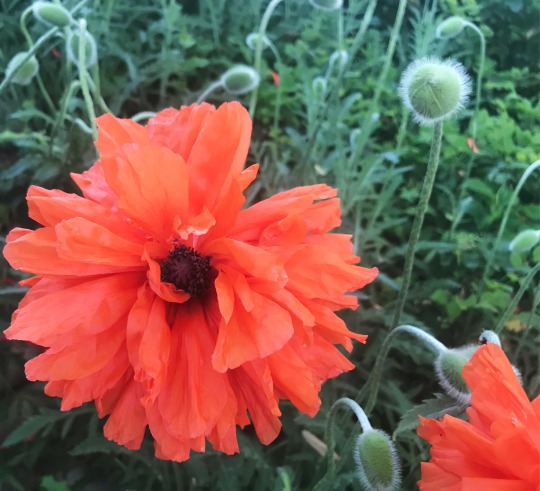
I feel implored to discover the potential impact flowers may have on the world. I began doing this through studying both the cultural significance of the lupine and the almond blossom in history, as well as discerning the current knowledge and reaction to flowers. “The Earth laughs in flowers” – Ralph Waldo Emerson. It is known that flowers are important to many cultures, but why? Lupine and the almond blossom, two flowers found in varying regions around the world, both surrounded by a rich history. This history will guide my own research to the more personal side of the impact of flowers so there might be understanding of why the ‘earth laughs in flowers’. Each culture holds a flower as their own. Millions of species are found all over this planet, yet next to no one concerns themselves with the significance of the magnificent flora population. It is the lack of wide spread knowledge of these intrinsic features of the planet that led me to ask: How might the increased value in recognizing cultural and personal significance of flowers with specific emphasis on the lupine and the almond blossom impact the world?
Literature Review
Flowers as a body are much too broad and unique to discuss the individual historical, cultural, backgrounds as well as the physical properties, so for the purposes of the secondary research, I have chosen to use the lupine and the almond blossom to provide a base of judgment for my primary research and conclusions.
Cultural Significance
Almonds originate in the Kashmir valley; they bring not only physical ties to the land but also religious ties. The Jerusalem post mentions Bible references all the way from the first references in Genesis to Job where they also describe physical properties used through metaphor in three of the primary monotheistic religions. The metaphor is significant, “if cut down will grow again” (2013, Jerusalem Post). This is significant to the physical regrowth properties and the cultures that follow this metaphor. If a tree can hold such a symbol for a people, what might the flower of that tree hold. There is not as much research into just the blossom itself. This is answered when discussing the meaning behind the festivals in the Kashmir region. The authors discus the meaning pre – decline in popularity. “The festival was a reminder that the worst of winter was over.” They also discussed the double standard held by trees. The Japanese will travel to Washington D.C. to see the cherry blossoms for a week, but those with almonds in their back yard are being replaced by more ‘romantic trees’. The value has been drained form the almond over time. They are being replaced by grapes for wine or olives (1989, Koul & Wafai). In their research, they found that they drink white wine at the beginning to signify the snow (see also Arús, Gradziel, and Tao R., 2009) ending and at the end they drink red wine to symbolize the true spring coming.
Although lacking in ancient historical legends, the lupine is still greatly significant to individuals and some cultures. Miss Rumphius is an American character who brings beauty to the world through the lupine and this has become a household book in the United States and was referenced in several articles (see Greenway, n.d. and Beakly, 1950). Peterson also says, “even if the lupine never bloomed they would be worth having in the garden for that feature alone” (see also Buchmann, 2006). Also, they are prominent symbols in Nova Scotia and key for research and some development in other areas of the world (Hunter).
Cultivated in the Soviet Union, Australia, and some Mediterranean countries, the Lupine has hope and reason to expand growth in South America as development of Lupine products widen (1979, Macauley and Dyer). Peterson (1998) states that winter and beginning of spring are prime time for growing her Lupines in central Pennsylvania. She also discusses how the structure and species might vary if she were in a different region of the United States. On the other side of the world, Schwartsz-Barker visits Nova Scotia where the popular plant and tourist attractions seems to be the lupine (2000, Black). She mentions seeing them on tee- shirts and coffee mugs, it is almost a cultural symbol in Nova Scotia. She pontificates about the fictional story, The Lupine Lady saying, “Miss Rumphius must have lived in a cool climate” because she cannot grow them in her humid home town in the US. The location and climate of the Lupine seem to be pickier than the Almond blossom as the weather directly and strongly affects the successfulness of growth and is mentioned in nearly every article found about Lupines. Perhaps the Lupine Lady is more idealistic that I had previously thought.
Cultural Practices and Application
Almond blossom festivals are traditions spread far and wide. Two include Capay Valley (1995, Bee News Services), and Tafroaut, Morocco. The cultural values and practices of these festivals differ from region to region, but all have claimed to see a decline in popularity over the last few years. The festivals opportunities extend beyond solely viewing the beautiful trees, but it is also an opportunity to share culture such as, various competitions – song, dance, food consumption, as well as food groups and a touristic draw for non-locals to interact with the community (1995, Bee News Services). According to Koul and Wafi (1989), the almond tree originated in the Kashmir valley (see also The Jerusalem Post). Arus states that archaeological studies date almond usage to 23,000 BC. In addition to usage there are “Legends and folklore containing references to almonds are common from the Levant to China (Rosengarten, 1984)” (2009 Arús, Gradziel, and Tao R.). This widespread knowledge, folklore, and practices emphasize the significance of the almond across cultures. This is translated into festivals and practical use via eating up into modern day.
Much to my dismay, I discovered the Almond Blossom festival and the Rose Festival in Morocco the year after I moved away. How tragic. On the positive side, I informed my whole family about them and made them promise me to attend next year’s festivals. I am anxiously awaiting to see their photos and hear of their adventures.
The almond is known to be used for eating in many cultures, although the different scientific properties make this slightly more difficult in some instances (2009, Arús, Gradziel, and Tao R). The Lupine in cooking? That is entirely unexpected, however, according to Schoeneberger, this has become increasingly more acceptable in some cultures. The writers of the article, the development and acceptability of the Lupine conducted a survey over a period of three years. Simultaneously, they have been introducing edible lupine products into the markets of the Andean civilization. The findings show that by the third-year lupine products were significantly more acceptable to children between nine and fifteen years old. “There is a very close correlation between acceptability based on the survey and consumption…This is most likely due to the time involved in introducing the questionnaire and having the respondents become accustomed to it” (Schoeneberger, 161). The scientific development of the lupine has contributed to making it a socially acceptable and edible product in certain cultures. The uses of plants and their flowers can change over time depending on the properties and preconceptions.
Method
The body of research for this project consisted of a survey with 100 responses and an interview conducted with an expert of flowers in the Denver region along with observations on a social experiment and an interview with a flower expert in Denver. The purpose being to focus on qualitative measures of the reaction of people to different flowers and questions regarding the personal and cultural significances of flowers. There was minimal use of quantitative data collection and only occurred in the form of ranking the significance of flowers on a numerical scale.

The demographic I tried to reach was broad as flowers and their significance, whether personal or cultural, is not dependent on age. On the other hand, it was my goal to reach as many different cultures as possible. The range of cultures is essential for understanding the different preferences and levels of engagement with flowers among the different niches of the world. In collecting my evidence, I recognized the difficulty of getting equal representation from all cultures around the world therefore determined my scale of measurement to be broad. I am measuring general reactions for the sake of measuring significance which is difficult to quantify.
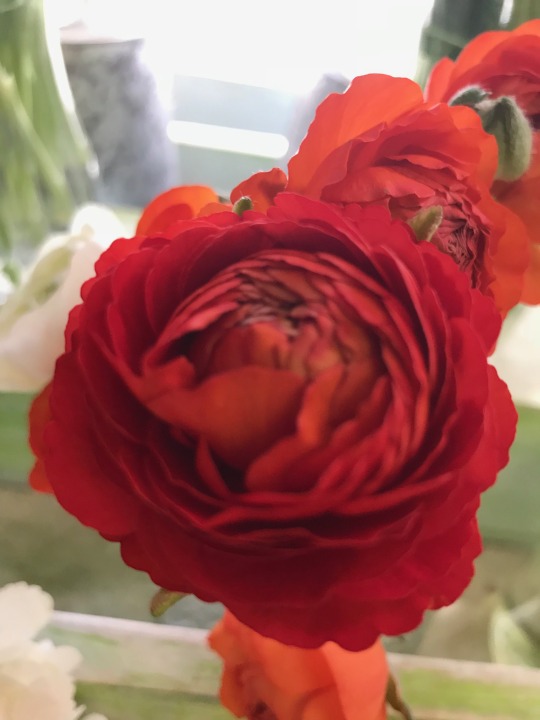
For field knowledge for this research project, I interviewed Chelsea Rice, a local florist at the Ruffly Rose on Pearl Street (see Appendix A). This is a cultural hub in Denver and is quite close to the University of Denver. The photo above is taken from their selection of cut flowers. Her experience includes twenty plus years working her second career as a florist in Denver. She was chosen because of her vast background of experiences as well as to tell a certain story from the standpoint of someone near the University.
My observations were taken based on a social experiment that I conducted in Nagel dining hall on the University of Denver campus, the notes can be seen in Appendix B. I took my research and printed out snips of paper stating the following:
The Lupine ~ Voraciousness & Imagination
Miss Rumphius by Barbra Cooney
“Lupines. Now they call her the Lupine Lady. Sometimes my friends stand with me outside her gate, curious to see the old, old lady who planted the fields of lupines… ‘When I grow up,’ I tell her, ‘I too will go to faraway places and come home to live by the sea.’ ‘That is all very well, little Alice,’ says my aunt. ‘but there is a third thing you must do.’ What is that? I ask her. ‘You must do something to make the world more beautiful.’”
The slip includes direct word definitions and meanings of the flower as well as a quote from the book, Miss Rumphius by Barbra Cooney. These were set on top on a bright colorful box with an arrangement of purple flowers places inside including lupines, which were difficult to find because the season is nearing its end. There was a sticky note on the outside that said please take one, intentionally leaving it up to the individual whether they take a flower or a card with writing on it. It was placed directly in front of the check out so that it would be impossible to avoid. If I heard correctly, the woman checking people out was encouraging people to take one anyways and kept the flowers up for days after I was done collecting my observations.
The final method of collecting data was in a survey that was sent to everyone that I know. The results can be found in Appendix C. The questions were tailored to target some numerical representation of the body of information I found on flowers. They also are aimed to record the different cultures and stories that participants responded to. I also wanted to get a numerical sense of both the recognition and appreciation of the flowers that I researched, the lupine and almond blossom.
Interpretation of the collected data was done by a triangulation technique and coding. I drew connections between the different themes and reaction that emerged by assigning the different themes colors. Similarities and stark divergences when found and then noted on a document to track the data. I then re-analyzed the data to connect it to the secondary research. It was significant to connect the secondary to the primary because it gave a solid research base in history to the personal reactions found in the primary research. In the end, I reached a succinct synthesis of the data from the different primary and secondary methods of research. I was surprised at how helpful the secondary research was in grounding the primary. It gives a natural segway from the broad cultural and historical significance to the more personal connections.
Results
As aforementioned, the results of my primary research are complicated because of the difficulty in getting a definitive result for the personal ‘significance’ of flowers. I received one hundred respondents to my survey, with about seventy filling it out to its entirety. My main platforms of response were through on campus fill outs, to posting it on my own Facebook, my father sharing it on his, and sending it to as many people as I could think of. This reaches a wide range of people from sixteen to seventy plus. Despite the data not coming to a concrete conclusion, some themes arose with implications applicable to my research question.
The survey brought much insight to what a broad spectrum of respondents thought about flowers and their history, impact on the world and personal significance. Most who finished the survey were inclined to have some investment in the topic, or at the very least wanted to see where this was going and how it may be relevant to their lives. On a scale from 1-100, eighty-four people responded bringing an average of seventy-four on a ranking of how significant flowers are in the individuals life. The free response data seemed to bring the most intriguing answers. The most prominent theme I found to emerge was the theme of family. While never in exactly the same way, around a quarter of the answers included some tie to family or to home. These were not always positive memories, but still categorized in the ‘favorite flower’ section. This went beyond culture and group identification, but related to a single family or person. The most frequented words in the open response question answers to the survey were smile, culture, and love. The varying length of responses were also key to analyze as they signify the levels of engagement with the topic; some told stories, others gave one word responses, while others gave a sentence and brief explanation.
The frequency of smile was mirrored in the observation portion of my primary research. Though only 25% of those in the dining hall where my experiment took place noticed the flowers and note placed at check out, nearing 100% of people who did had a smile on their face. I had no way to know what they were thinking of, but only that they were simply reading and smiling with happiness and peace expressed through shining teeth revealed by tightened lips. One woman said, “I love lilacs, I have a lilac bush in my new house.” Almost as if her new home was made better by the lilac that was there. At one point, there was a group of five people around the bouquet all discussing their favorite flowers. Of all the people who stopped to look, only one of them was male and only one of them took a flower, which she promptly placed behind her ear for the duration of the meal. The response was primarily positive with only one person rolling their eyes and the rest walked by without noticing.
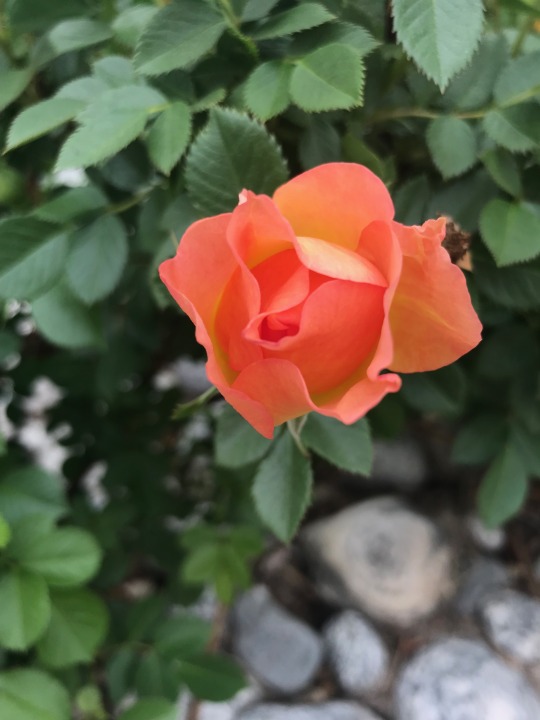
The most notable flower according to all questions in my survey and interview was the rose. From the responses, people associate them with love, weddings, and romance. Some other attached specific stories to them but the broad majority were with love and romance. Another popular opinion was the different colors available with roses. A lot of responses included a “because my (family member) likes them”. The only response that was openly gendered against flowers was, “I wouldn’t, I’m a dude.” Very few referenced emotional characteristics or the language that flowers put off. One stated, “I’m not sure. But something that would exemplify strength.” A small portion referenced price, one being “something cheap” and the other, “Whatever is the cheapest b/c we ballin on a budget.” The different ranges of responses were extensive.
Unlike most people who participated in my survey, I actually do not like roses. Firstly, they remind me of a lot of bleeding when I was ten and would try to pick them obsessively from my backyard in California, and secondly, it reminds me of inattentive high school boyfriends who would gift them to me. Hello. Flowers are my life, and I have told you my favorite possibly 1000 plus times. Maybe it’s just not a part of my culture or preference, but I prefer a peony, thank you.
The interview was an addition that was much needed as it allowed for more of one person’s story. This allowed for engagement on the personal level as well as engaging years of observations on the florist’s part. The florist who I interviewed said, “flower arranging has become like a second career, and I love every minute of it” (Rice, Ruffly Rose, May 10, 2018). A key ‘flower’ time of year she brought up multiple times was that wedding season (summer) is always high time for the florist market. She also noted when asked what the ambiance of her shop is in association to flowers that the general mood is always light as people leave their burdens out the door.
While talking with Miss Rice, she actually offered me a job! In that moment, a whole new future popped into my mind. Traveling the world working in different flower shops and seeing all there is out there. Here is an actual quote from my bucket list, “learn how to be a florist (unchecked), take your arranging flowers knowledge and give them to random people (unchecked), visit all famous flower markets (especially the Philippines!!!) (unchecked), write a book about it/publish flower book (also unchecked)” I’ve got a long way to go, but this could be the first steps!
In talking to her a second time, I discovered that her grandmother also was the one to introduce her to flowers and her appreciation for them. This is yet another tie to family that came out through my primary research. In addition, her expertise did reveal that roses are the most popular flower at all times of year, which matches the preference shown in the survey.
Discussions
I in no way think that my research and qualitatively measure the significance of flowers in people’s lives. In fact, it may have brought me farther away from that realization. Not in any way that might demean their significance, but perhaps that it is even more complex than I had thought. One will never be able to tell the minute details that make up a person’s happiness, however I do think that I did get a general grasp on the fact that for many in my survey pool at least, flowers do hold some sort of significance that has the potential for positive impact. It seems that flowers hold memories and stories that are rich and full of meaning, history, and in a lot of cases love. Why might we not use this as a method for positivity?
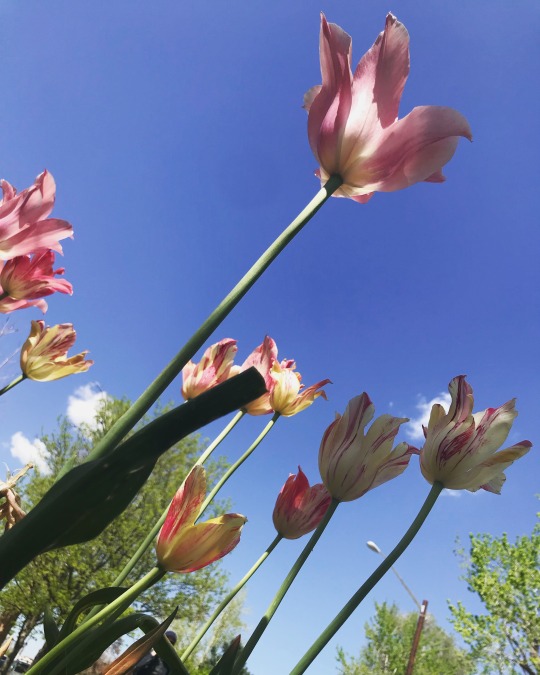
The polls taken in the survey showed that the four most commonly associated emotions with flowers are beauty, appreciation, simplicity, and peace. If everyone felt just a smidge more of any of these four words, anxiety levels wouldn’t nearly be as high, neither would violence or hate. A study by Nancy Etcoff, Ph.D., of Massachusetts General Hospital and Harvard Medical School, shows “people feel more compassionate toward others, have less worry and anxiety, and feel less depressed when fresh cut flowers are present in the home” (2006, Society of American Florists). These are broad and aggressive claims, I know, but at least some part of that claim is true, and if so, why not promote flowers? Increase the number of botanical gardens. Employ more city florists to decorate public spaces. Hire historians to write the stories of the flowers that bring people in the community joy. Label the existing flowers for those who will take the time to read about them. If that would bring me or my family a little more peace in the chaos, then I would fully support that endeavor. As Rice stated, “No one cries in flower shops.” A few less tears could do this planet some good. If, on average, survey respondents ranked the significance of flowers to be over 70%, then there is compelling reason to make them more available and integrated into everyday life and culture. This data however, does not show in what ways that this would be effective which is where I would say my primary research is lacking.
These sentiments of positivity were reflected across all areas of my primary research. One person who took the survey stated, “In the sense of a culture of a nomadic military family- all flowers are important – from every region, worldwide. They symbolize the importance of blooming where you are planted and appreciating he beauty found in diversity.”
This response drew some tears as I am from a military family and can relate to this nomadic culture of life. Blooming where one is planted is something that my mom has told me since I was young. It has become a motto of sorts in our house because that is all that we can do. Perhaps the metaphor extended to my love of flowers.
Another respondent shared a meaningful story, “The Cherokee rose, Cherokee legend says that if a baby died on the trail of tears, a flower would grow where the mother’s tears fell to the ground.” Both of these respondents had such rich stories to tell and were prompted to do so by asking about a flower. A flower is such a general term, but if applied specifically and strategically, it could be used as a method of cross-cultural understanding and healing. Might we listen to the stories of others if presented through flowers? I do not know, but I know that reading the responses to my survey brought tears to my eyes on multiple occasions.
A flower is a simple biological entity that holds so much power as a symbol to so many different cultures as seen from the 100 different cultures represented in the survey responses. In my primary research, for one question about a flower that was culturally significant to you, I counted twenty-one different flowers with different stories attached. For the ones that were repeated, there were different cultures and different stories associated with the same flower. For one the rose symbolizes their loved one, and for another the lost babies on the trail of tears, for another, a miracle that occurred in Mexico in the 1500’s. Any common ground on any issue is potential for progress in the areas of mutual understanding or respect. I believe that flowers have presented themselves as an option to bring about some of this change for the better of this world. How might one measure that? For me that would be in smiles which some of this research has brought or in the remembering about the significance of a flower that does not get brought up in conversation often.
Conclusions and Future Study
Each country, some cities, major events, and certain holidays have claimed a flower as their symbol. This is known, but is it valued? No one talks about what they mean to the individual or the continuous meaning for society. My research scratched the bottom of this potential, but revealed it nonetheless. There may be no quantitative measure of how increased value of the cultural and personal significance of flowers might impact the world, but there were implications that the personal significance is indeed significant.
I do not claim that everyone likes flowers or that they have made an impact in the lives of everyone. In the words of one of my survey respondents, “Elise, I’m sorry, I’m allergic to flowers, so I don’t get a lot of them”, perhaps he or she might like to, and we can implore science to discern how we might solve the pollen allergy problem. They even insight some sentiments of hatred in me during spring when my allergies kick in. Knowing where people were from specifically and having categories of regions and cultures to organize the results would have been beneficial to categorizing the findings. The lack of this additional feature did not take away from my research; however, I do think that more information would have led to more specific results.
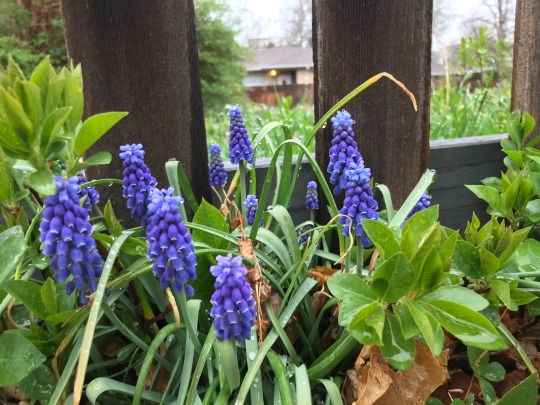
From my research, I found that people love flowers and an increased value on them would be beneficial for the health of the world. My findings lead me to believe that flowers are significant entities in people’s lives, but go unnoticed. This bridges the gap that the secondary research left in place, by showing the personal significances of flowers in my survey respondents lives. This success however, opened up new areas for investigation in future research endeavors. Particularly the methods of integration of flowers into daily life or making them more available. This project concluded that they are significant, thus I am assuming that they should be included more. The research did not reveal in what ways that this would be possible, thus creating a new gap for discovery.
Perhaps my bucket list will have to include some of these research elements after these discoveries. If I can tailor the impact on myself to benefit others, which was already a goal of mine, it seems as though I must find the best way to do this. The research must continue, but in fact, writing is a process and am excited to see where it takes me.
References
Arús P., Gradziel T. Genomics of Almond, Oliveira M.M., Tao R. (2009) Genomics of Almond. In: Folta K.M., Gardiner S.E. (eds) Genetics and Genomics of Rosaceae. Plant Genetics and Genomics: Crops and Models, vol 6. Springer, New York, NY
Beakley, Burleigh M. Lupines for Early Spring. Los Angeles Times (1923-Current File); Los Angeles, Calif. [Los Angeles, Calif]08 Oct 1950: G35.
Bee Staff News Services. (1995, February 25). CAPAY VALLEY ALMOND FESTIVAL. The Sacramento Bee, p. B.3.
Buchmann, S. (2016). The reason for flowers : Their history, culture, biology, and how they change our lives. (First Scribner trade paperback ed.).
Charlish, Rosamund. (2011). Diffenbaugh, Vanessa: The Language of Flowers. School Librarian, 59(4), 252.
Cooney, B. (1982). Miss Rumphius (1st ed.). New York: Viking Press.
Craig Summers Black. An in-the-Know Flowering Show. Better Homes and Gardens; Des Moines Vol. 78, Iss. 9, (Sep 2000): 132.
Dyer, T., & Macauley, James. (1979). FLOWERS AND THEIR FOLK-LORE. The Leisure Hour, Jan. 1877-Oct. 1903, (1456), 742-744.
Greenaway, K. (n.d.). Language of flowers. F. Warne.
HALEVI, Y. (2013, January 23). ISRAEL THE BEAUTIFUL: MILK, HONEY, AND ALMOND TREES.
Hunter, L. (2005). Lupines. Canadian Gardening, 16(4), 42,44.
Kenworthy, D., Bevan, T., Fellner, E., Curtis, R., Rickman, A., Nighy, B., . . . DNA Films. (2004). Love actually (Widescreen (2.35:1) version. ed.). Universal City, CA: Universal.
New Harvard study investigates the home ecology of flowers; behavioral research concludes that living with flowers strengthens feelings of compassion, decreases anxiety and worry. (2006, Oct 24). PR Newswire
Peterson, Cass. To Love a Lupine (or Something Like It) New York Times, Late Edition (East Coast); New York, N.Y. [New York, N.Y]24 May 1998: 9.
POETICAL LANGUAGE OF FLOWERS. (1970). Appletons' Journal of Literature, Science and Art (1869-1876), Iv (69), 112.Gross, U., Galindo, R.G. & Schoeneberger, H. Plant Food Hum Nutr (1983) 32: 155.
Soodan, A.S., Koul, A.K. & Wafai, Floral biology of almond (Prunus amygdalus L. Batsch) under cultivation in Kashmir valley. B.A. Proc. Indian Acad. Sei. (Plant Sci.) (1989) 99: 297.
0 notes